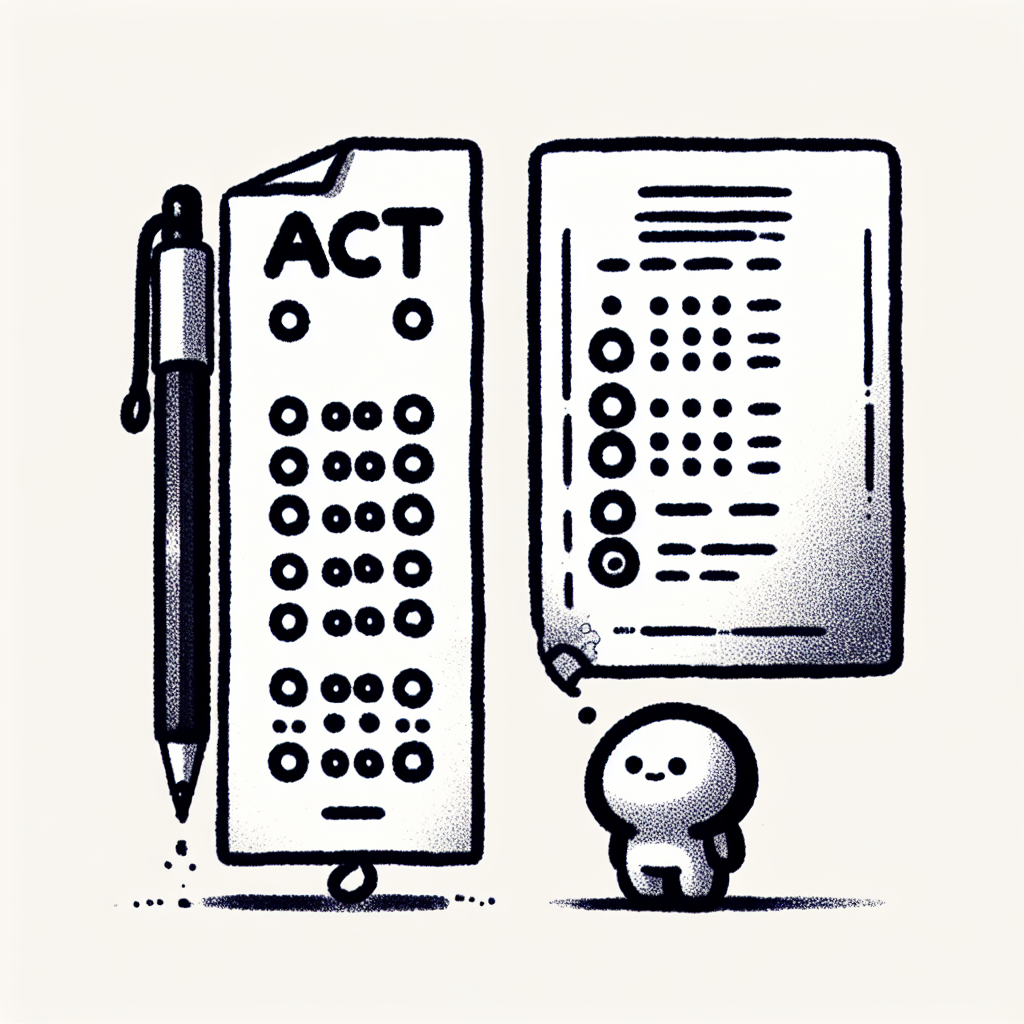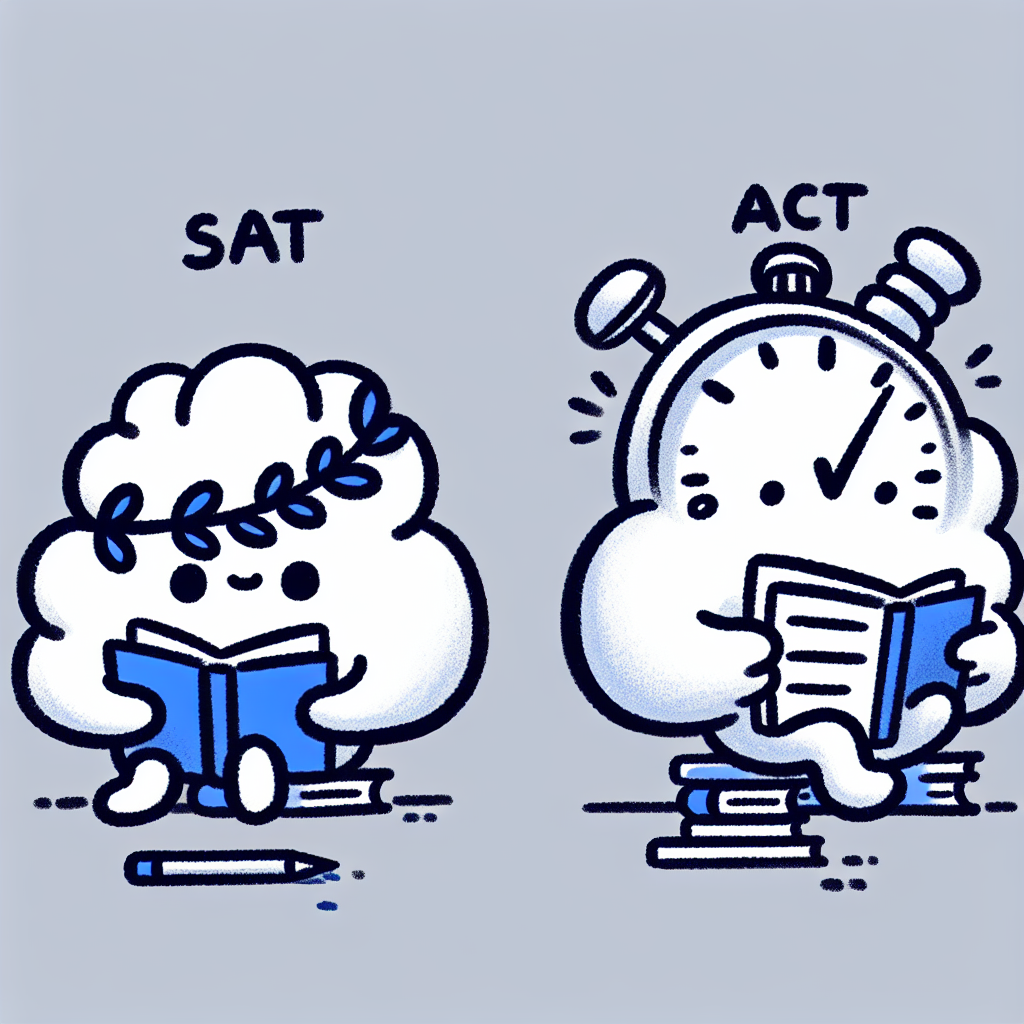Introduction
Standardized testing has long played a central role in college admissions across the United States. The SAT and ACT have historically served as key metrics for evaluating applicants' academic readiness. However, recent years have brought significant changes to how these tests are used. Many colleges and universities have adopted test-optional or test-blind policies, prompting students and families to rethink the value and purpose of SAT/ACT prep.
As a result, SAT/ACT prep has evolved. Rather than focusing solely on achieving a high score, preparation now also involves understanding how testing fits into a broader admissions strategy. Students need to assess whether submitting scores will strengthen their applications and how to balance test prep with other elements like extracurriculars, essays, and GPA.
Understanding SAT/ACT prep today means more than just practicing multiple-choice questions. It requires a clear view of the changing admissions landscape and an informed approach to deciding when and how to prepare for standardized tests.

Understanding SAT and ACT Exams
Key Differences Between the SAT and ACT
Both the SAT and ACT are standardized tests used for college admissions in the United States, but they differ in structure, timing, and content. The SAT is divided into two main sections: Evidence-Based Reading and Writing (ERW), and Math. It includes an optional essay, although many schools no longer require it. The ACT, on the other hand, consists of four sections: English, Math, Reading, and Science, with an optional Writing test.
Timing is another key distinction. The SAT allows more time per question, making it more suitable for students who prefer a slower pace. The ACT is more time-pressured and includes more questions overall. In terms of content, the ACT includes a dedicated science section, while the SAT tests scientific reasoning within the reading and math sections.
Regional preferences also play a role. Traditionally, schools in the Midwest and South have leaned toward the ACT, while the SAT has been more popular on the East and West coasts. However, most colleges now accept both tests equally, and it is important for students to research individual college requirements as part of their SAT/ACT prep.
The Role of Standardized Tests in Holistic Admissions
Standardized tests like the SAT and ACT have historically served as a common metric to compare students from different schools and backgrounds. These exams were intended to offer an objective measure of college readiness and academic potential.
However, the role of these tests in admissions has come under increasing scrutiny. Critics argue that standardized tests can reinforce socioeconomic disparities, as students from higher-income families often have greater access to test prep resources. This has led to a growing number of colleges adopting test-optional policies, especially in the wake of the COVID-19 pandemic.
Supporters of standardized testing maintain that these exams can still play a useful role in holistic admissions, where factors like GPA, extracurricular activities, essays, and recommendation letters are also considered. As students plan their SAT/ACT prep, they should be aware of each college's testing policy and the broader debates surrounding fairness and equity in admissions.

The Rise of Test-Optional and Test-Blind Policies
Definitions and Distinctions
In the context of SAT/ACT prep, it is important to understand two key terms: test-optional and test-blind. A test-optional policy means that students have the choice to submit SAT or ACT scores with their college applications, but they are not required to do so. On the other hand, test-blind policies indicate that colleges will not consider standardized test scores at all, even if they are submitted.
Growth of Test-Optional Policies
In recent years, especially following the onset of the COVID-19 pandemic, there has been a significant increase in the number of colleges adopting test-optional policies. For the 2023 admissions cycle, more than 1,750 four-year colleges implemented test-optional admissions (usnews.com). The pandemic disrupted access to testing sites, prompting many institutions to reevaluate the necessity of standardized testing in admissions decisions.
Implications for Application Trends
The rise of test-optional and test-blind policies has had a notable effect on college application trends. Selective institutions experienced a sharp increase in the number of applications they received, as more students felt encouraged to apply without the barrier of standardized test scores (usnews.com). This shift has also changed how students approach SAT/ACT prep, with some choosing to deprioritize test preparation while others continue to take the exams to strengthen their applications where scores are still considered. As a result, applicant strategies are evolving in response to the changing admissions landscape.

Pros and Cons of Test-Optional Policies
Benefits for Students
Test-optional policies in SAT/ACT prep can reduce the pressure associated with standardized testing. Students no longer feel compelled to achieve a perfect score, which helps lessen stress and anxiety during the college application process. This shift can also level the playing field by empowering students from underrepresented backgrounds—such as low-income families or first-generation college applicants—who may lack access to extensive test prep resources.
Challenges for Colleges
For colleges, test-optional admissions increase the reliance on holistic application reviews, which can be resource-intensive. Without SAT/ACT scores, admissions officers must weigh essays, extracurriculars, and recommendation letters more heavily. This can make it more difficult to differentiate among applicants who all present similarly strong GPAs, particularly when transcripts come from schools with varying academic rigor.
Mixed Outcomes for Students
While some students benefit from not submitting scores, others may be at a disadvantage—especially those from lesser-known high schools. Without standardized test results, it can be harder for these students to demonstrate their academic capabilities to admissions officers. On the other hand, strategic score submission remains a tool for applicants who perform well on the SAT/ACT; a high score can still enhance an application in a competitive admissions landscape.

The Current State of SAT/ACT Performance and Participation
In recent years, SAT/ACT prep has become increasingly important as trends in student performance and participation have shifted.
Declining ACT Scores
The average composite ACT score dropped to 19.8 in 2022, marking the lowest national average in over three decades. This decline raises concerns about student preparedness and the effectiveness of current SAT/ACT prep strategies (usnews.com).
Increasing SAT Participation
While ACT scores are falling, SAT participation has been on the rise. In 2019, more than 2.2 million students took the SAT, a 4% increase from the previous year. This growth is largely attributed to state-funded, in-school testing initiatives that make the SAT more accessible to a broader student population (usnews.com).
College Readiness Concerns
Despite increased participation, college readiness remains a significant issue. In 2014, data showed that more than half of SAT test-takers were unprepared for college-level coursework. This highlights a gap between taking standardized tests and being academically ready for higher education, emphasizing the critical role of effective SAT/ACT prep (usnews.com).

Effective SAT/ACT Prep Strategies
When and How to Start
Effective SAT/ACT prep starts with early planning. Students are advised to begin their preparation in their sophomore or early junior year. This timeline allows for a gradual, less stressful approach to mastering the material. A consistent study schedule—such as dedicating specific hours each week to test prep—helps build momentum over time and prevents last-minute cramming.
Customized Study Plans
Each student learns differently, so SAT/ACT prep strategies should be tailored to individual learning styles. Visual learners may benefit from charts and videos, while auditory learners might prefer lectures or discussions. Using a diagnostic test early in the process helps identify specific areas of weakness, allowing students to focus their efforts where it matters most. This targeted approach increases the efficiency and effectiveness of study sessions.
Practice and Review
Regular practice is critical for success on standardized tests. Taking multiple full-length practice exams under timed conditions helps students become familiar with the test format and pacing. After each test, it's important to review every mistake and analyze the reasoning behind correct answers. Adjusting strategies based on these insights leads to continuous improvement.
Leverage Free and Paid Resources
Students should take advantage of all available resources. Many high schools offer free SAT/ACT prep programs. Additionally, there are numerous online platforms that provide practice questions, video tutorials, and interactive tools. Paid resources, such as private tutors and test prep books, can offer more personalized instruction and structure for those who need it.
Expert Recommendations
Experts agree that practice, persistence, and personalization are the foundation of effective SAT/ACT prep. According to usnews.com, students who consistently practice and adapt their study strategies to their individual needs are more likely to see significant score improvements.

Navigating Admissions in a Test-Optional World
Should You Submit Your Scores?
In the evolving landscape of SAT/ACT prep, deciding whether to submit test scores has become a strategic choice. High scores can still significantly strengthen an application, particularly when applying to competitive programs or majors with rigorous academic demands. If your test scores exceed the average range for a school, they may help offset a lower GPA or lighter extracurricular profile.
However, if your SAT/ACT scores fall below a college’s reported middle 50% range, it may be advantageous to withhold them—especially if you have a strong GPA, compelling essays, and robust extracurriculars. Applicants should also consider how their intended major might influence how scores are evaluated. For example, STEM programs may place more weight on math scores, while humanities departments might prioritize writing and critical reading.
Strategic Applications
With test-optional policies differing by institution, it’s essential to research each college’s approach to SAT/ACT prep and submission. Some schools remain test-optional in name but still consider scores heavily when submitted. Others adopt a truly holistic review process, giving equal weight to all parts of the application.
Using test scores strategically can help you stand out, especially at schools with large applicant pools. If your scores are a strength, submitting them can demonstrate academic readiness and commitment. Some merit-based scholarships and honors programs still require or prefer test scores, so understanding specific requirements is key to maximizing opportunities.
Equity and Access Considerations
While the shift to test-optional policies aims to promote fairness, questions remain about whether they truly level the playing field. Access to high-quality SAT/ACT prep often correlates with socioeconomic status, giving students from wealthier backgrounds an advantage in achieving higher scores.
Test-optional policies may reduce pressure on students who lack access to expensive prep courses or private tutoring. However, disparities in opportunity persist, and students from under-resourced schools may still face challenges even in a test-optional system. Navigating these complexities requires students and families to assess how SAT/ACT prep fits into their broader application strategy, considering both personal strengths and systemic inequities.

The Future of Standardized Testing
Will Test-Optional Become Permanent?
In recent years, a growing number of colleges and universities have adopted test-optional policies, allowing applicants to choose whether to submit SAT or ACT scores. This trend accelerated during the COVID-19 pandemic, as access to testing centers became limited. Many institutions initially implemented these policies as temporary measures, but some have begun to make them permanent. For example, the University of California system has eliminated the use of SAT and ACT scores entirely in admissions decisions.
Despite this shift, there is ongoing debate about the role of standardized testing. Supporters argue that SAT/ACT prep allows students from diverse backgrounds to showcase their academic potential on a level playing field. Critics, however, contend that test scores often reflect socioeconomic disparities and may not accurately predict college success.
Balancing Test Scores with Other Metrics
As standardized tests become optional or are de-emphasized, admissions offices are placing greater weight on other components of the application. Essays, teacher recommendations, and the rigor of high school coursework are now more critical in evaluating a student's readiness for college. These elements offer a more holistic view of an applicant and provide context that test scores alone may not capture.
Additionally, alternative assessments are gaining traction. Some schools are considering portfolios, graded writing samples, and interviews as part of the admissions process. These tools can highlight a student’s strengths in ways that SAT/ACT prep cannot, potentially leading to more equitable and comprehensive evaluations.

Conclusion
SAT/ACT prep remains a valuable tool, even as more colleges adopt test-optional policies. Strategic preparation equips students with the skills and confidence to perform well if they choose to submit scores, potentially strengthening their applications. It also empowers students to make informed decisions about whether testing aligns with their academic goals and target schools. In a constantly evolving admissions landscape, staying updated on trends and requirements is essential for navigating the process successfully.














